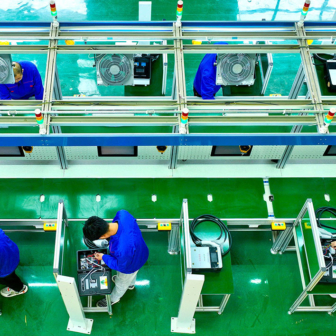Tonight’s TV viewing will shine a spotlight on one corner of an issue that is not being talked about in the election campaign, yet is high on Australians’ list of concerns: the bipartisan policy of high immigration.
In the year to June 2018, a net 255,480 people from overseas migrated to Australia. That’s just over one new arrival for every 100 people already here. About two-thirds of them settle in Melbourne and Sydney, where they are the dominant cause of both cities’ rapid population growth.
It is an election issue, but only at the fringes, where it is one of the factors driving voters to One Nation and other parties of the far right. There is no debate between the major parties on this because there is an overwhelming consensus among Australian elites that high immigration is a Good Thing, and anyone who criticises it must be a racist.
Opinion polls consistently show that most Australians have a different view. They are not against immigration, but want to reduce it to lower levels. The government has quietly been reducing the permanent migration intake, and has now lowered the annual target from 190,000 to 160,000.
Yet at the same time, unnoticed in the debate, the combined net flow of permanent and long-term arrivals into Australia has soared to its second-highest level ever, and the highest for a decade: 299,190 in the twelve months to February, up by 20 per cent in the past three years.
Most of the arrivals are coming here not as permanent migrants or temporary workers, but as students. And one source stands out: the little Himalayan country of Nepal, just thirty million people, living in one of Asia’s poorest countries.
In 2017–18, one in every 1500 inhabitants of Nepal emigrated to Australia. In an era of strict immigration controls, that is an astonishing number for two countries so far apart, with no common language, heritage or ethnicity.
Over the five years to mid 2018, one in every 500 Nepalis emigrated to Australia — and that’s in net terms, after deducting those who returned. In 2017–18, little Nepal became Australia’s third largest source of migrants after India and China.
Tonight’s ABC Four Corners program will explain how it has happened. Deregulation has allowed universities to selectively lower their standards to bring in more fee-paying foreign students, even when they fail to meet the thresholds for English language skills or academic achievement. And put under financial pressure by the Commonwealth’s funding cuts, some universities have done so.
And it’s not surprising that many of these students are struggling, and that lowers the academic standards that are one of Australia’s selling points in competition for overseas students — along with the ease of moving from student visa to permanent residency.
This is not the first time immigration from Nepal has surged. A decade ago, we saw a scam with training visas, in which “students” from India and Nepal came for training courses in Australia, then quickly vanished into the workforce. The scam saw net immigration set record levels in 2008–09, before then immigration minister Chris Evans shut it down. But most of those who came stayed on here.
At the current pace of immigration, Australia will soon have more residents born in Nepal than in Greece. Nothing wrong with that if they’re doing jobs that only they can do, but the persistence of very high youth unemployment and underemployment — taken together, 633,000 people in March, or 29 per cent of the youth workforce — suggests our leaders and Australians as a society have let them down.
As I have written before, a report last year by Treasury and the home affairs department estimated that in the previous five years, 73 per cent of all net full-time job growth in Australia went to recent migrants. That implies a net growth of only 20,000 full-time jobs a year for Australian-born workers.
That was far too few to keep up with population growth. The Bureau of Statistics reports that between 2012 and 2017, the number of Australians aged fifteen to twenty-four in full-time work shrank by 113,000, while the number unemployed rose by 25,000 and the those underemployed (mostly, wanting full-time work but having to settle for part-time) rocketed up by 102,000.
As with declining housing affordability and growing congestion in Sydney and Melbourne, high immigration is not the only reason why young people can’t find jobs, but it is a central one.
Elite Australian opinion has been indifferent to this epidemic of young people unable to get full-time jobs to get started in life. But it is a reality that is being felt in families and communities throughout Australia, and it is one issue driving the rise of the minor parties on the right. •




